Cognitive Skills: Developing Thinking Abilities in Students
Understand cognitive thinking skills and how to develop them in the classroom. Learn about attention, memory, reasoning, and executive functions that underpin successful learning.
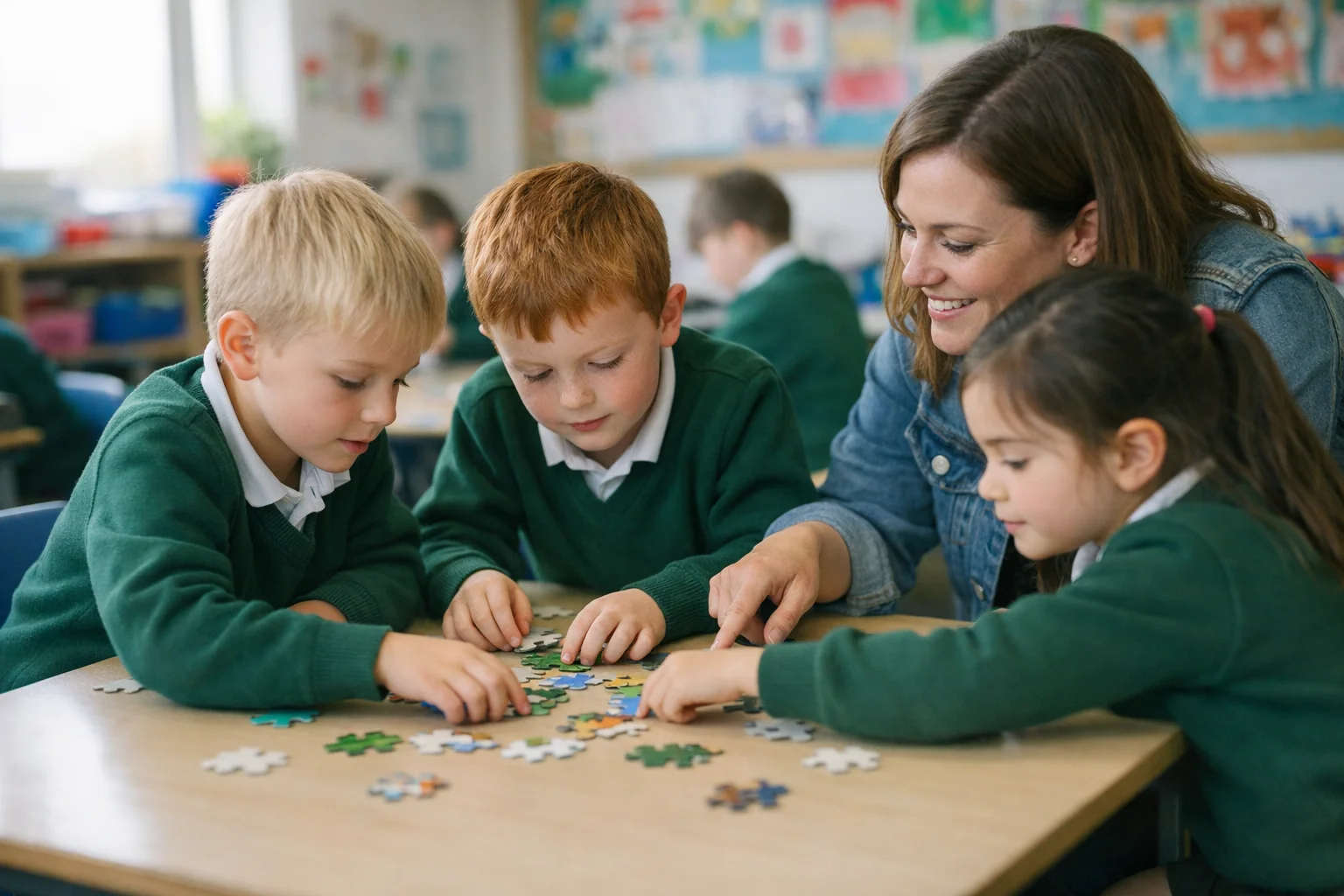

Understand cognitive thinking skills and how to develop them in the classroom. Learn about attention, memory, reasoning, and executive functions that underpin successful learning.
Cognitive thinking skills are the mental processes that allow us to perceive, understand, and analyze information through attention and learning processes. These skills are essential for problem-solving, decision-making, and critical thinking. Fortunately, cognitive thinking skills can be learned and developed with practice and training.
In this article, we'll explore what cognitive thinking skills are, why they are important, and how we can promote them in the classroom. We'll also provide some practical tips and exercises to help you enhance your students' cognitive thinking skills to become more effective problem-solvers and decision-makers.
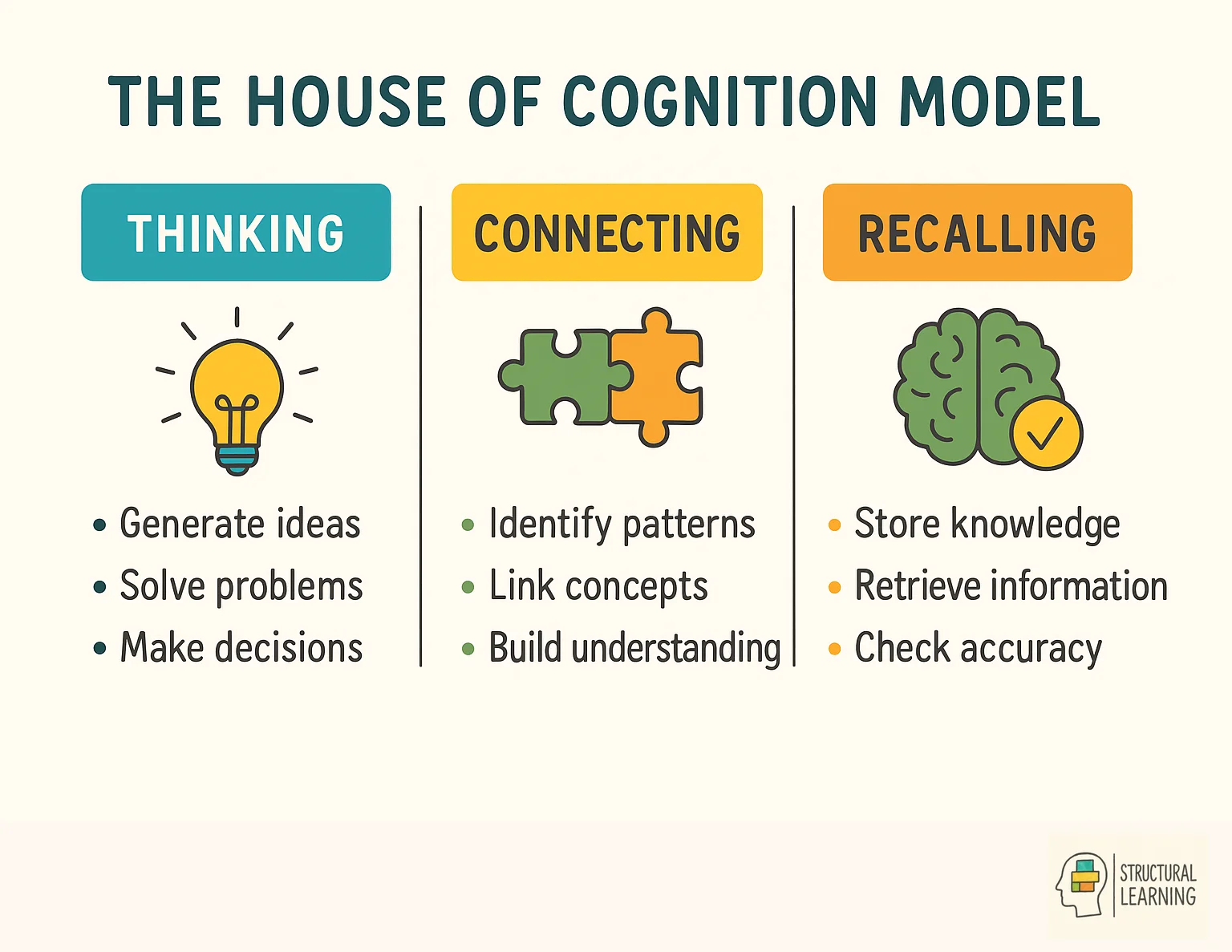
Using the house of cognition model, this article will look at each part of the house and then go on to suggest how this model can help us to understand failure to learn. The article will outline why it is important to focus on cognitive skills and cognitive processes in order to support learning.
Learning is a complex process that involves various cognitive thinking skills such as attention, memory, problem-solving, and decision-making. These skills are essential for acquiring new knowledge, making connections between different concepts, and applying what has been learned in different situations.
By understanding the different components of cognitive thinking skills and how they relate to learning, we can develop strategies to support learners and help them overcome obstacles to learning. It is important to recognize that cognitive skills are not fixed, but can be developed and improved with practice and targeted interventions.
The foundations of the house are the underpinning theories about cognition. These theories would need several separate articles to explore them in detail, but the ‘headlines’ of these theories are:
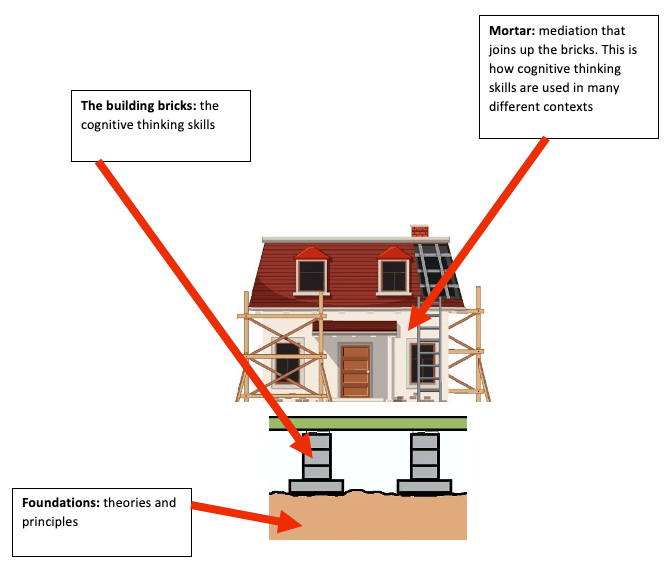
Teachers can support cognitive thinking skills by implementing Feuerstein's Input-Elaboration-Output framework to identify where learning breaks down and provide targeted interventions at each stage. This involves teaching students how to gather information effectively (input), process and connect ideas (elaboration), and communicate their understanding clearly (output). Regular practice with scaffolded activities and explicit instruction in thinking strategies helps students develop these essential mental processes.
How can we support and promote cognitive thinking skills? The idea of the house of cognition is one way of providing a structure for this support. It also helps us to understand some of the factors involved in successful, and unsuccessful, learning.
The bricks that make up the house of cognition are the cognitive thinking skills that all individuals develop and use. Professor Reuven Feuerstein's work, mentioned above, led him to draw up a list of what he called cognitive functions.
These cognitive functions are what we might also call thinking skills, learning-to-learn skills, cognitive processes, cognitive ability or cognitive skills. Feuerstein’s original list was of deficient cognitive functions but later this list was turned round to describe what we should, rather than what we shouldn’t see. He organised his list of cognitive thinking skills into three areas.
One important part of Feuerstein’s work was that he recognised the importance of the affective elements of learning. What do we mean by the affective element? Basically, this involves emotions, feelings and attitudes. It relates to how we deal with things emotionally. Feuerstein called these non intellective factors.
The cognitive thinking skills and non-intellective factors are shown in the table below. Information in this table is drawn from Adey and Shayer, Feuerstein and Lidz.
Teachers should organize cognitive skills development by starting with foundational skills like attention and perception before progressing to complex skills like analysis and synthesis. The most effective approach follows a structured sequence: first establishing basic processing abilities, then building elaboration skills, and finally developing output and communication abilities. This systematic organization ensures students have the necessary prerequisites before tackling higher-order thinking tasks.
Focussed perception, paying attention
Using all the senses to gather information
Systematic search/exploration, planning
Gathering information using a system or plan so that nothing is missed
Conservation
Knowing what stays the same and what changes.
Using labels
Giving the things we gather through our senses and our experience names so that we can remember them more clearly and talk about them
Use of temporal and spatial concepts
Using knowledge about space and time: describing things and events in terms of where and when they occur
Precision and accuracy
Being precise and accurate when it matters; recognising the need to be precise and accurate when gathering information
Considering more than one source of information
Gathering information from several sources; organising the information we gather by considering more than one thing at a time (working memory is used to hold information in our head whilst gathering other information)
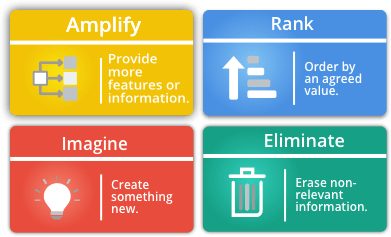
Defining the problem
Knowing what to do with the information gathered: what do we need to do or figure out
Relevance
Using only the part of the information we have gathered that is relevant, that is, that applies to the problem, and ignoring the rest
Planning and sequencing
Making a plan that will include the steps we need to take to reach our goal, knowing what to do first, second, and so on, knowing what ‘finished’ looks like.
Comparison
Being able to recognise what is the same and what is different
Categorising
Finding the class or set that new objects or experiences belong to
Projecting relationships
Seeing how things go together; looking for the relationship by which separate objects, events, and experiences can be used together
Hypothetical thinking
If………..then thinking; thinking about different possibilities and figuring out what would happen if you were to choose one or another
Working with several sources of information: memory
Working memory: holding information in your head whilst working with it.
Short term memory: recalling recent learning.
Long term memory: recalling previous learning or approaches to solving problems
Logical justification
Being able to defend your opinion or choice using logical evidence
Interiorisation
Having a good picture in our mind of what we are looking for, or what we must do
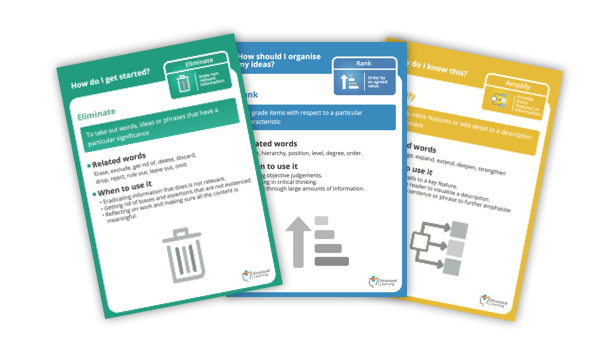
Precision and accuracy in communication
Communicating clearly using precise and accurate language so your answer is clear
Communicating outcomes
Having the necessary vocabulary/expressive skills to communicate findings
Reducing egocentric communication
Being able to put yourself in the shoes of the listener
Restraining impulsivity
Thinking before responding; reducing a trial and error approach to learning; count to 10 (at least) so that you do not say or do something you will be sorry for later
Overcoming blocking
Not being able to respond because the learner feels that s/he can’t do it. If you cannot answer a question for some reason even though you ‘know’ the answer, do not fret or panic. Leave the question for a little while and then, when you return to it, use a strategy to help you find the answer
Visual transport
Mentally lifting something up and placing it elsewhere; Carrying an exact picture of an object in your mind to another place for comparison without losing or changing some details
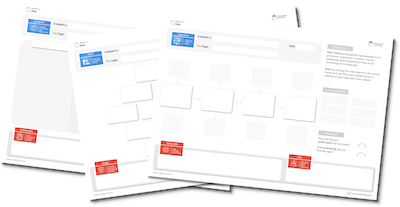
Motivation
Wanting to learn and take part, engagement in the task/activity/lesson. How interested is the learner?
Curiosity
Willingness to find out
Frustration tolerance
Coping when tasks are challenging: what does the learner do when things become tough?
Self regulation, including restraining impulsivity
Taking time to think or act
Response to challenge
Wanting to tackle a more difficult task or step of a task
Response to mediation/intervention of adults
How the learner responds to the adult’s mediation, intervention or support
Persistence
Keeping going, seeing a task through to the end
Flexibility
The learner tries out alternative solutions or self corrects, or the learner perseveres in using a strategy even when it does not work
Effective strategies for promoting thinking skills include using explicit instruction to teach specific cognitive processes, incorporating think-alouds to model mental strategies, and providing structured practice opportunities with immediate feedback. Teachers should also create cognitive challenges that gradually increase in complexity while ensuring students understand both the thinking process and the content being learned. Regular reflection activities help students become aware of their own thinking patterns and develop metacognitive skills.
The mortar that holds together the bricks of the house of cognition represents the process of mediation. Mediation is a specific way of supporting and promoting cognitive thinking skills. We saw that there are five layers to the cognitive map which help us to understand task demands.
Using the house of cognition analogy, if we simply pile up bricks the house won’t be stable. We have to stick the bricks together. So, if we teach cognitive thinking skills without sticking them together, they are not likely to be useful.
Mediation is a way of helping pupils to make links between the curriculum they are following and the cognitive thinking skills they are using. Feuerstein suggested that for an interaction to be called mediation, the following three essential characteristics have to be present:
These essential characteristics are important because interaction can only be called mediation when these three characteristics are used. Kathy Greenberg gives a useful overview of how mediation is more than good teaching. Greenberg suggests what 'Teacher-Mediators' do in contrast to good teachers. Here are some examples:
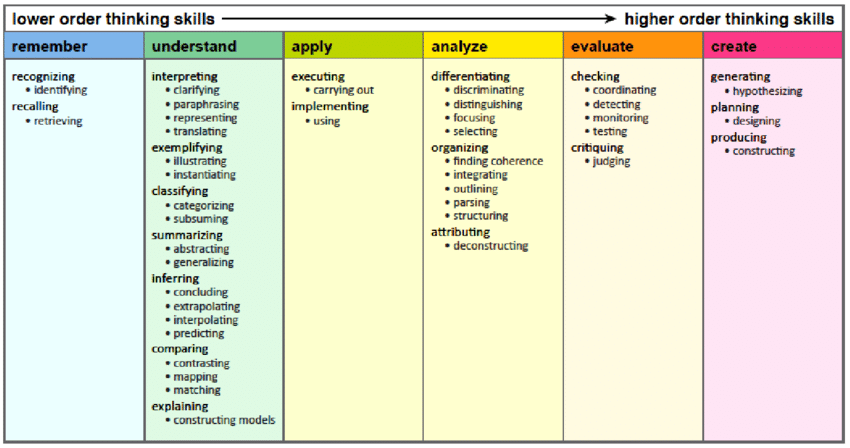
The idea of building a house also illustrates the importance of cognitive thinking skills in relation to the taught curriculum. The roof of a house is the last part to be added to the building. It isn't possible to build the roof and then add the other parts of the building.
In our house of cognition, the roof represents the curriculum or the products of learning. Successful learning is being able to put the roof on the house.....and that won’t work without the foundations, bricks and mortar being in place first. Cognitive skills are important foundations for learning.
We could argue that the current National Curriculum and EYFS Early Learning Goals are the roof of the house. They set out the content of what should be learned; the products of learning. Therefore, schools and early years settings mostly work on the roof of the house. There is little or no emphasis on the other parts of the house of cognition, so there is nothing to hold up the roof.
Special education teachers can develop cognitive skills by using structured cognitive intervention programs that break down complex thinking processes into manageable steps, providing intensive scaffolding and repeated practice. The key is recognizing that cognitive abilities are modifiable regardless of past difficulties, as demonstrated by Feuerstein's work with Holocaust survivors. Teachers should focus on building missing cognitive functions systematically while addressing both intellectual and affective factors that impact learning.
Promoting cognitive skills in children with special educational needs can be a challenging but rewarding task. Here are nine practical strategies that teachers can use:
Remember, every child is unique, and what works for one might not work for another. It's important to be patient, flexible, and creative in your approach.
Key Insights:
According to a study by the American Society for Engineering Education, using real-world examples in teaching can significantly improve students' understanding and retention of information. As the famous educational psychologist Jean Piaget once said, "The goal of education is not to increase the amount of knowledge but to create the possibilities for a child to invent and discover, to create men who are capable of doing new things."
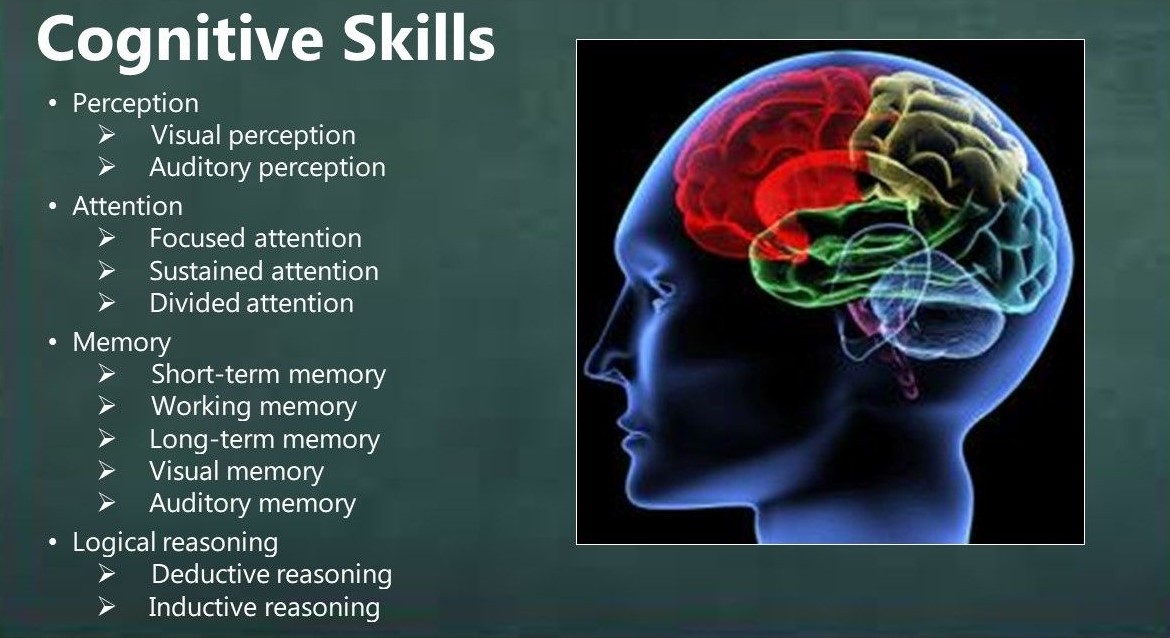
Focusing on learning processes helps teachers identify specific cognitive breakdowns that prevent student success, allowing for targeted interventions rather than generic remediation. When teachers understand how students think and process information, they can teach strategies that transfer across subjects and situations. This process-oriented approach builds students' capacity to learn independently by developing their underlying cognitive skills rather than just helping them memorize content.
So how do we put the roof on the house? This can be a challenge when there is so much emphasis on delivering the products, rather than the processes of learning. However, a few simple adjustments can be made in order to include the bricks and mortar in everyday classroom practice:
‘when you do this piece of writing you will make a plan. A plan means thinking about something before you do it and deciding the steps you need to do to finish the task. You decide what to do first and next and so on. So when we use a plan for writing we have three big chunks, the beginning, the middle and the end. Then for each chunk we will list in order what will happen in our story. When we have this plan we can begin to write in more detail’
‘what does finished look like?’
‘What will you do first? And next?’
‘Let’s make a plan so you don’t miss anything out’
‘What can you do to help you to remember?’
Focusing on the processes of learning through supporting cognitive thinking skills will help children and young people to be successful and independent learners. If an individual knows how to learn they will develop skills and behaviours that are transferable to all kinds of contexts beyond the classroom and the taught curriculum.
References
Adey, P. and Shayer, M. (1994). Really Raising Standards: Cognitive intervention and academic achievement. London: Routledge
Greenberg, K.H. (2005). The Cognitive Enrichment Advantage Handbook. Knoxville, USA: KCD Harris and Associate Press
Feuerstein, R (nd). Developed Cognitive Functions. Source: Feuerstein Institute, www.icelp.info
Lidz, C. (2007). Application of Cognitive Functions Behaviour Rating Scale. In: Haywood and Lidz, 2007, Dynamic Assessment in Practice: Clinical and educational applications. Cambridge University Press
Cognitive thinking skills are the mental processes that allow us to perceive, understand, and analyze information through attention and learning processes. These skills are essential for problem-solving, decision-making, and critical thinking. Fortunately, cognitive thinking skills can be learned and developed with practice and training.
In this article, we'll explore what cognitive thinking skills are, why they are important, and how we can promote them in the classroom. We'll also provide some practical tips and exercises to help you enhance your students' cognitive thinking skills to become more effective problem-solvers and decision-makers.

Using the house of cognition model, this article will look at each part of the house and then go on to suggest how this model can help us to understand failure to learn. The article will outline why it is important to focus on cognitive skills and cognitive processes in order to support learning.
Learning is a complex process that involves various cognitive thinking skills such as attention, memory, problem-solving, and decision-making. These skills are essential for acquiring new knowledge, making connections between different concepts, and applying what has been learned in different situations.
By understanding the different components of cognitive thinking skills and how they relate to learning, we can develop strategies to support learners and help them overcome obstacles to learning. It is important to recognize that cognitive skills are not fixed, but can be developed and improved with practice and targeted interventions.
The foundations of the house are the underpinning theories about cognition. These theories would need several separate articles to explore them in detail, but the ‘headlines’ of these theories are:

Teachers can support cognitive thinking skills by implementing Feuerstein's Input-Elaboration-Output framework to identify where learning breaks down and provide targeted interventions at each stage. This involves teaching students how to gather information effectively (input), process and connect ideas (elaboration), and communicate their understanding clearly (output). Regular practice with scaffolded activities and explicit instruction in thinking strategies helps students develop these essential mental processes.
How can we support and promote cognitive thinking skills? The idea of the house of cognition is one way of providing a structure for this support. It also helps us to understand some of the factors involved in successful, and unsuccessful, learning.
The bricks that make up the house of cognition are the cognitive thinking skills that all individuals develop and use. Professor Reuven Feuerstein's work, mentioned above, led him to draw up a list of what he called cognitive functions.
These cognitive functions are what we might also call thinking skills, learning-to-learn skills, cognitive processes, cognitive ability or cognitive skills. Feuerstein’s original list was of deficient cognitive functions but later this list was turned round to describe what we should, rather than what we shouldn’t see. He organised his list of cognitive thinking skills into three areas.
One important part of Feuerstein’s work was that he recognised the importance of the affective elements of learning. What do we mean by the affective element? Basically, this involves emotions, feelings and attitudes. It relates to how we deal with things emotionally. Feuerstein called these non intellective factors.
The cognitive thinking skills and non-intellective factors are shown in the table below. Information in this table is drawn from Adey and Shayer, Feuerstein and Lidz.
Teachers should organize cognitive skills development by starting with foundational skills like attention and perception before progressing to complex skills like analysis and synthesis. The most effective approach follows a structured sequence: first establishing basic processing abilities, then building elaboration skills, and finally developing output and communication abilities. This systematic organization ensures students have the necessary prerequisites before tackling higher-order thinking tasks.
Focussed perception, paying attention
Using all the senses to gather information
Systematic search/exploration, planning
Gathering information using a system or plan so that nothing is missed
Conservation
Knowing what stays the same and what changes.
Using labels
Giving the things we gather through our senses and our experience names so that we can remember them more clearly and talk about them
Use of temporal and spatial concepts
Using knowledge about space and time: describing things and events in terms of where and when they occur
Precision and accuracy
Being precise and accurate when it matters; recognising the need to be precise and accurate when gathering information
Considering more than one source of information
Gathering information from several sources; organising the information we gather by considering more than one thing at a time (working memory is used to hold information in our head whilst gathering other information)

Defining the problem
Knowing what to do with the information gathered: what do we need to do or figure out
Relevance
Using only the part of the information we have gathered that is relevant, that is, that applies to the problem, and ignoring the rest
Planning and sequencing
Making a plan that will include the steps we need to take to reach our goal, knowing what to do first, second, and so on, knowing what ‘finished’ looks like.
Comparison
Being able to recognise what is the same and what is different
Categorising
Finding the class or set that new objects or experiences belong to
Projecting relationships
Seeing how things go together; looking for the relationship by which separate objects, events, and experiences can be used together
Hypothetical thinking
If………..then thinking; thinking about different possibilities and figuring out what would happen if you were to choose one or another
Working with several sources of information: memory
Working memory: holding information in your head whilst working with it.
Short term memory: recalling recent learning.
Long term memory: recalling previous learning or approaches to solving problems
Logical justification
Being able to defend your opinion or choice using logical evidence
Interiorisation
Having a good picture in our mind of what we are looking for, or what we must do

Precision and accuracy in communication
Communicating clearly using precise and accurate language so your answer is clear
Communicating outcomes
Having the necessary vocabulary/expressive skills to communicate findings
Reducing egocentric communication
Being able to put yourself in the shoes of the listener
Restraining impulsivity
Thinking before responding; reducing a trial and error approach to learning; count to 10 (at least) so that you do not say or do something you will be sorry for later
Overcoming blocking
Not being able to respond because the learner feels that s/he can’t do it. If you cannot answer a question for some reason even though you ‘know’ the answer, do not fret or panic. Leave the question for a little while and then, when you return to it, use a strategy to help you find the answer
Visual transport
Mentally lifting something up and placing it elsewhere; Carrying an exact picture of an object in your mind to another place for comparison without losing or changing some details

Motivation
Wanting to learn and take part, engagement in the task/activity/lesson. How interested is the learner?
Curiosity
Willingness to find out
Frustration tolerance
Coping when tasks are challenging: what does the learner do when things become tough?
Self regulation, including restraining impulsivity
Taking time to think or act
Response to challenge
Wanting to tackle a more difficult task or step of a task
Response to mediation/intervention of adults
How the learner responds to the adult’s mediation, intervention or support
Persistence
Keeping going, seeing a task through to the end
Flexibility
The learner tries out alternative solutions or self corrects, or the learner perseveres in using a strategy even when it does not work
Effective strategies for promoting thinking skills include using explicit instruction to teach specific cognitive processes, incorporating think-alouds to model mental strategies, and providing structured practice opportunities with immediate feedback. Teachers should also create cognitive challenges that gradually increase in complexity while ensuring students understand both the thinking process and the content being learned. Regular reflection activities help students become aware of their own thinking patterns and develop metacognitive skills.
The mortar that holds together the bricks of the house of cognition represents the process of mediation. Mediation is a specific way of supporting and promoting cognitive thinking skills. We saw that there are five layers to the cognitive map which help us to understand task demands.
Using the house of cognition analogy, if we simply pile up bricks the house won’t be stable. We have to stick the bricks together. So, if we teach cognitive thinking skills without sticking them together, they are not likely to be useful.
Mediation is a way of helping pupils to make links between the curriculum they are following and the cognitive thinking skills they are using. Feuerstein suggested that for an interaction to be called mediation, the following three essential characteristics have to be present:
These essential characteristics are important because interaction can only be called mediation when these three characteristics are used. Kathy Greenberg gives a useful overview of how mediation is more than good teaching. Greenberg suggests what 'Teacher-Mediators' do in contrast to good teachers. Here are some examples:

The idea of building a house also illustrates the importance of cognitive thinking skills in relation to the taught curriculum. The roof of a house is the last part to be added to the building. It isn't possible to build the roof and then add the other parts of the building.
In our house of cognition, the roof represents the curriculum or the products of learning. Successful learning is being able to put the roof on the house.....and that won’t work without the foundations, bricks and mortar being in place first. Cognitive skills are important foundations for learning.
We could argue that the current National Curriculum and EYFS Early Learning Goals are the roof of the house. They set out the content of what should be learned; the products of learning. Therefore, schools and early years settings mostly work on the roof of the house. There is little or no emphasis on the other parts of the house of cognition, so there is nothing to hold up the roof.
Special education teachers can develop cognitive skills by using structured cognitive intervention programs that break down complex thinking processes into manageable steps, providing intensive scaffolding and repeated practice. The key is recognizing that cognitive abilities are modifiable regardless of past difficulties, as demonstrated by Feuerstein's work with Holocaust survivors. Teachers should focus on building missing cognitive functions systematically while addressing both intellectual and affective factors that impact learning.
Promoting cognitive skills in children with special educational needs can be a challenging but rewarding task. Here are nine practical strategies that teachers can use:
Remember, every child is unique, and what works for one might not work for another. It's important to be patient, flexible, and creative in your approach.
Key Insights:
According to a study by the American Society for Engineering Education, using real-world examples in teaching can significantly improve students' understanding and retention of information. As the famous educational psychologist Jean Piaget once said, "The goal of education is not to increase the amount of knowledge but to create the possibilities for a child to invent and discover, to create men who are capable of doing new things."

Focusing on learning processes helps teachers identify specific cognitive breakdowns that prevent student success, allowing for targeted interventions rather than generic remediation. When teachers understand how students think and process information, they can teach strategies that transfer across subjects and situations. This process-oriented approach builds students' capacity to learn independently by developing their underlying cognitive skills rather than just helping them memorize content.
So how do we put the roof on the house? This can be a challenge when there is so much emphasis on delivering the products, rather than the processes of learning. However, a few simple adjustments can be made in order to include the bricks and mortar in everyday classroom practice:
‘when you do this piece of writing you will make a plan. A plan means thinking about something before you do it and deciding the steps you need to do to finish the task. You decide what to do first and next and so on. So when we use a plan for writing we have three big chunks, the beginning, the middle and the end. Then for each chunk we will list in order what will happen in our story. When we have this plan we can begin to write in more detail’
‘what does finished look like?’
‘What will you do first? And next?’
‘Let’s make a plan so you don’t miss anything out’
‘What can you do to help you to remember?’
Focusing on the processes of learning through supporting cognitive thinking skills will help children and young people to be successful and independent learners. If an individual knows how to learn they will develop skills and behaviours that are transferable to all kinds of contexts beyond the classroom and the taught curriculum.
References
Adey, P. and Shayer, M. (1994). Really Raising Standards: Cognitive intervention and academic achievement. London: Routledge
Greenberg, K.H. (2005). The Cognitive Enrichment Advantage Handbook. Knoxville, USA: KCD Harris and Associate Press
Feuerstein, R (nd). Developed Cognitive Functions. Source: Feuerstein Institute, www.icelp.info
Lidz, C. (2007). Application of Cognitive Functions Behaviour Rating Scale. In: Haywood and Lidz, 2007, Dynamic Assessment in Practice: Clinical and educational applications. Cambridge University Press